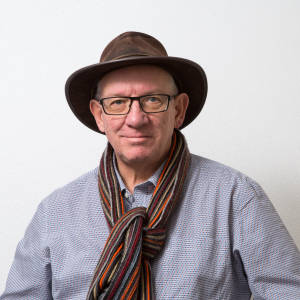Radio Kootwijk
Radio Kootwijk is a former transmitter park on the Veluwe, west of the town of Apeldoorn, which in the first half of the 20th century formed an important communication link between the Netherlands and its then colonies, especially the Dutch East Indies. It was built in 1918. Also, houses were built for employees, which together formed the village of the same name.
As early as 1917, temporary transmitting and receiving stations for long-wave wireless telegraphy were installed on the Malabar plateau near Bandoeng on the Dutch East Indies island of Java, for contact with the motherland. A counterpart also had to be built in the Netherlands.
A large antenna was built, consisting of interconnected copper cables suspended from six 212 meter high masts. Copper cables were laid underground for earthing. A radio station was built at the heart of this system. This was housed in a reinforced concrete building designed by the architect of the Amsterdam school Julius Luthmann. For the design of the main building, Building A, the architect was inspired by the Telefunken broadcasting station in Nauen, Germany and, thanks to his interest in Egyptian mythology, also by a sphinx. The shape of this mythical creature can be recognized in it, especially from the air. The building's most famous nickname is 'the Cathedral'.
During the Second World War, the long-wave machine transmitter was used by the German occupier for one-way traffic with the submarines of the Kriegsmarine in the Atlantic Ocean. The Wehrmacht also placed anti-aircraft guns on the buildings and expanded P.T.T.-buildings, including air-raid shelters. On April 6 and 7, 1945, when Canadian liberation troops were approaching, the cell towers were blown up. The Germans had also destroyed all transmission equipment, insofar as it was still there (parts of the installations had been taken to Germany). They also tried to destroy Building A in one fell swoop, by dropping a mast over it. However, the reinforced concrete building was not damaged.
In March 1980 the last and largest transmission tower (212 m high) was brought down. In 1999 the park lost all broadcast functions. In 2001, all transmitter equipment was removed from the buildings, after which the site was purchased by the Rural Area Service (DLG) in 2004 on behalf of the Dutch State.
The main building of the former transmitter park, Building A, is a national monument. Designed by architect Julius Luthmann in art-deco style, with sculptures by sculptor Hendrik van den Eijnde, the building is a hybrid of the Berlin and Amsterdam Schools. It served as the setting for the American film Mindhunters (released 2004) and the Dutch film Ver van Familie (filmed in 2007).

Comments
Sign in or get an account to comment.


